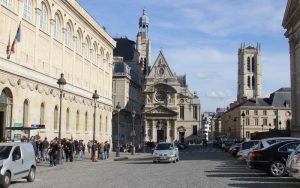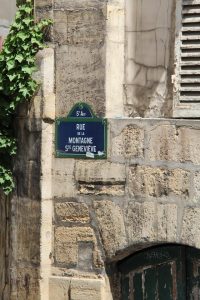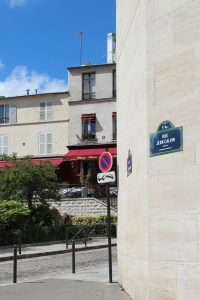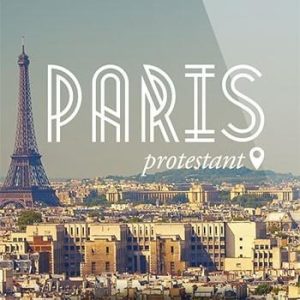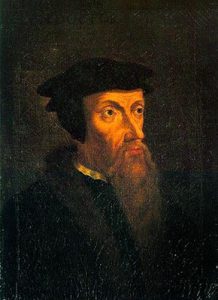Calvin was born in Noyon, in the Picardie region, in 1509, and came to Paris to study humanities in 1522. First he attended the Collège de la Marche where he was taught by Mathurin Cordier, a well-known grammarian. The college was on the rue Clovis, at the end of the rue de la Montagne Sainte-Geneviève.
After the Collège de la Marche he went to the Collège Montaigu from 1523 to 1527, supposedly as a day pupil. He may have lived in a house on the left when facing the Church Saint-Etienne du Mont, where Pascal and Racine’s tombstones can be seen.
When he left the Collège Montaigu in 1528, Ignatius Loyola was about to finish his mostly military studies. Loyola was born in 1491 and died in 1556. He founded the Compagnie de Jésus (Society of Jesus) which Pope Paul III acknowledged in 1540, and was its first Superior General. The names of all the famous people who attended the Collège Montaigu are written on the facade of the Sainte-Geneviève library.
Calvin continued his studies in Orléans where Pierre de l’Estoile taught him law, and also in Bourges. During his second stay in Paris Calvin attended the Collège Fortet of which only one hexagonal tower is preserved, at 21 rue Valette – former rue des Sept-Voies.
In 1532 he came back to Paris and lived with Étienne de la Forge, his fellow countryman from Picardie. In 1533 he fully embraced the Reformed ideals and proved it by giving communion though he was not a member of the clergy. In 1534, however, after the Day of the Placards -written against the Mass and posted in public places, even in Francis I’s apartments in Amboise- Calvin quickly fled from Paris. He went back to Noyon, then to Basel and finally to Geneva.
There were many printers’ shops in the Latin Quarter, notably rue Jean de Beauvais or rue Saint-Jacques. They played a key role in circulating classical and biblical texts enabling Reformation ideas to spread. In 1545 Robert Estienne published a Bible with scholarly notes considered heretic. Which caused him problems and he had to flee to Geneva where he settled down with his family.
Starting from la Place du Panthéon, walk beside the Lycée Henri IV on the rue Clotilde, then turn left into the rue Lhomond and 300 metres on your left is the rue Jean Calvin.
Jean Calvin was born in Noyon in 1509. His father was the notary of the Cathedral was excommunicated for political reasons. During his studies he was exposed to the ideas of the Reformation, spread by itinerant Lutheran preachers, thanks to translations of the Bible into French. Calvin focused on the theological principles of justification by faith and salvation by grace. From Geneva where he fond refuge, he gave the reformed communities in France an organisation, a catechism and a liturgy. Calvin wrote theological works: Institution of the Christian Religion published in 1536, was corrected and published several times during his lifetime. He wrote a lot of sermons. He supported local Reformation movement leaders in France sending them a great number of letters. He died in Geneva in 1564.

